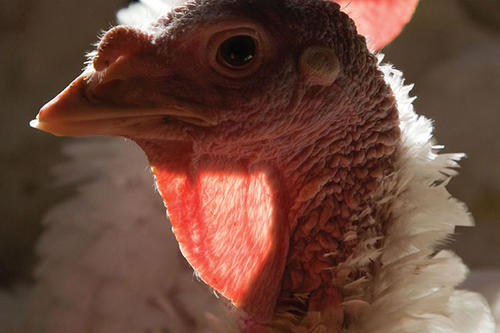
The U of M is playing a key role in Minnesota’s response to control the virus and aid food producers.
Avian flu is considered an “introduced foreign animal disease.” And this outbreak is the most serious of its kind that Minnesota has seen, having already hit 55 farms in 16 counties.
In testimony to the Minnesota Senate’s Committee on Capital Investment, April 28, U of M dean of veterinary medicine Trevor Ames stressed “the very significant economic and emotional strain that this disease is putting on our producers and on our state.”
Ames noted that Minnesota’s agencies are strongly responding to the crisis. “I was in Willmar on Saturday,” he said. “And when we toured the emergency operations center, the lead veterinarian from the USDA response team told the governor that he had been doing this for over 20 years—these types of emerging responses—and that he had never seen a state respond so well.”
Coordinated Response
Back in January 2015, U faculty alerted the Board of Animal Health, the Department of Agriculture, and the Minnesota poultry industry about the avian flu threat. U experts had been monitoring the spread of the virus in the Pacific Northwest and pulled together experts to begin response planning.
U faculty across several disciplines are now working with state and federal agencies and with industry groups such as the Minnesota Turkey Growers Association. U labs and researchers are playing a critical role in the effort. Since the outbreak began, the U’s Veterinary Diagnostic Lab has been testing for avian flu seven days a week. So far over 5,000 tests have been completed.
Extension’s Role
U Extension is helping Minnesota’s food producers get their healthy birds and eggs safely to market. Experts are monitoring any threats to human health or to other animal populations and are working with flock owners to monitor and protect their birds. Agribusiness specialists are analyzing the economic effects of avian flu on our state and its food industry.
Extension has an avian flu webpage with basics for urban and backyard poultry owners. The page outlines what to do if your poultry might be infected and gives steps to protect your flock. All information is offered in English and Spanish.
Need for a Critical Lab
To strengthen future responses to infectious diseases, our state needs to move to replace a key U of M research facility—the veterinary isolation lab, the only place in Minnesota where animals larger than a rabbit can be housed to study infectious diseases.
The current facility, on the U’s St. Paul campus, is made up of two obsolete laboratories built in 1958. They have structural and mechanical issues that limit the research that can be performed.
A new U of M veterinary isolation lab is part of this year’s capital request.
Join the Legislative Action Network and advocate for the U of M's request.
See More U of M Research That’s Tackling Minnesota’s Biggest Problems
Advancing clinical research to find cures
Creating sustainable practices for a thirsty planet
- Categories:
- Health




